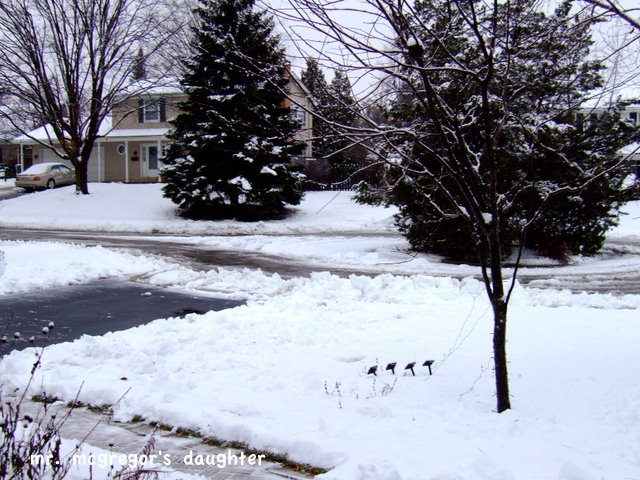
I've long thought how great it would be to have solar-powered Christmas lights, so I could light my trees and shrubs without extension cords. Solar-powered lights also eliminate the need for timers, as they turn on at dusk and go off when they run out of power or at dawn, whichever comes first. They also don't cost anything to run and rely on sustainable power. I held off on trying them because the cost was prohibitive. Until now.
Around the end of November, I found Phillips solar-powered lights for a reasonable price at the store, so I bought several sets, which was all there was left on the shelf. They were easy to install once I figured out where the ground stake was. After pushing the stake into the ground, the solar collector is then slid onto the stake. Each string does not have that many lights, so it took four strands to light the tree pictured above.

All the solar collectors must face south and be charged for at least 8 hours before being turned on for the first time. I also put a set on my baby Abies koreana and one on a recently planted Cotinus.
The lights worked perfectly when the ground was bare, even on cloudy days. They even worked after a snow.

The light didn't last all night, but on sunny days they were on past midnight, which is late enough for my purposes. But then things started to go amiss. First, one string on the tree stopped working. Then it snowed some more. And even more after that. Eventually, this is what happened.

Solar collectors can't efficiently collect solar energy if they are buried under the snow. I brushed them off a few times, but it snowed so much, and then it got so cold, I just left them buried, and the lights did not go on. Now that the snow has shrunk back from the collectors, the three functioning strings on the tree and the lights on the shrubs are working again.
Here are my conclusions from my completely unscientific one-month test: solar Christmas lights are best for climates with less snow than the Chicago area gets. They probably are not well suited to more northerly latitudes regardless of snow because they need 8 hours of daylight to charge, and around the Winter Solstice, there are many places that don't receive that much light. I'd prefer more lights on each string, as having a collection of mini solar panels looks kind of odd. I suppose if there were an evergreen groundcover around them, that would help camouflage them. Would I buy solar-powered Christmas lights again? Yes, definitely, as I did end up buying one more set on sale after Christmas. They may not work perfectly, but they work just well enough.